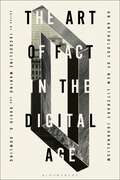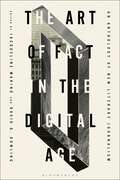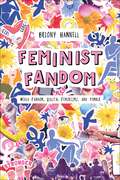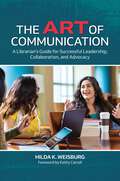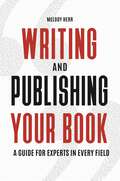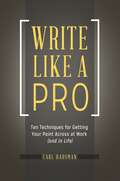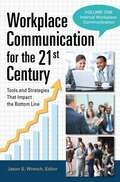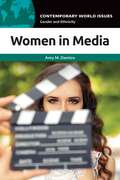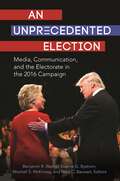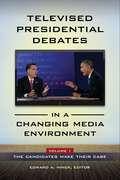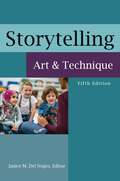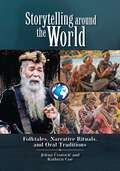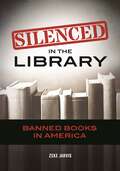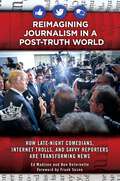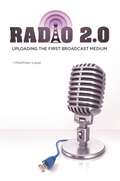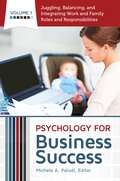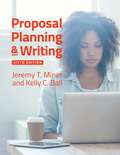- Table View
- List View
Introduction to Python Network Automation Volume II: Stepping up: Beyond the Essentials for Success
by Brendan ChoiContinue your Python network automation journey and delve deeper into advanced techniques and methodologies. Volume 2 of this comprehensive guide takes you beyond the essentials, equipping you with advanced skills and strategies crucial for success in network automation. Building upon the knowledge gained in Volume 1, you’ll set the stage for mastery in this dynamic field. You’ll start by establishing a robust lab environment for advanced automation projects tailored to your needs and use practical exercises to gain valuable insights into essential networking protocols. Then automate repetitive tasks with precision and efficiency by leveraging powerful Python libraries and tools. You’ll also see how to streamline IP address management and data center infrastructure management tasks with Python. Discover advanced techniques for network management and monitoring to optimize network performance and security. Explore the development of custom tools and applications for Cisco IOS upgrade tasks in complex network environments and put your skills to the test with real-world scenarios. All this is designed to solidify your expertise and confidence in network automation practices. Your network management capabilities will be enhanced with advanced tools, such as NetBox. Introduction to Python Network Automation Volume 2 - Stepping up provides a comprehensive roadmap to elevate your skills and excel in the dynamic field of network automation. Whether you're a seasoned professional or a newcomer to the field, this guide equips you with the tools and knowledge needed to thrive in today's network automation landscape. What You Will Learn Apply Python fundamentals and network automation strategies effectively. Utilize Python for streamlined network administration, boosting productivity. Consolidate Linux fundamentals and IP network services for enhanced network management. Practice implementing regular expressions in Python for network application development. Develop working Cisco IOS upgrading Python application in PoC environment. Explore Python's extensive applications in enterprise network automation for versatile solutions. Who This Book Is For IT engineers and developers, network managers and students, who would like to learn network automation using Python.
Rediscovering Rubén Darío through Translation
by Dr. Carlos F. GrigsbyA long overdue examination of Rubén Darío's multilingual work and influences alongside the contexts and politics of canonization in world literature. Rediscovering Rubén Darío through Translation addresses the peculiar obscurity of Darío by asking these questions: How can one of the most important writers of a major world language be almost entirely unknown in the English-speaking world? How is it that other writers of the same language (e.g., Lorca or García Márquez) achieve widespread recognition in the anglophone world, while he remains unnoticed? What role does translation play in this? What can it tell us about the way in which world literature is articulated? Carlos F. Grigsby approaches Darío's oeuvre through translation. In doing so, he explores not only the place of Darío in the translation of Spanish American literature into English, but also the place of translation in Darío's own writing. The result is a double-sided painting, as it were: the recto is titled “Translation in Darío” and the verso “Darío in Translation.” This book challenges the field of world literature by revealing some of the biases present in its representation of Spanish American literature. It adopts a multilingual framework – chiefly using English, Spanish, French, and to a lesser degree Latin and Catalan – in analyzing Darío's writing alongside that of his contemporaries. As a result, it reveals the multilingualism of Darío's own writing, opening new avenues for the study of his work and of Spanish American modernismo more generally.
Rediscovering Rubén Darío through Translation
by Dr. Carlos F. GrigsbyA long overdue examination of Rubén Darío's multilingual work and influences alongside the contexts and politics of canonization in world literature. Rediscovering Rubén Darío through Translation addresses the peculiar obscurity of Darío by asking these questions: How can one of the most important writers of a major world language be almost entirely unknown in the English-speaking world? How is it that other writers of the same language (e.g., Lorca or García Márquez) achieve widespread recognition in the anglophone world, while he remains unnoticed? What role does translation play in this? What can it tell us about the way in which world literature is articulated? Carlos F. Grigsby approaches Darío's oeuvre through translation. In doing so, he explores not only the place of Darío in the translation of Spanish American literature into English, but also the place of translation in Darío's own writing. The result is a double-sided painting, as it were: the recto is titled “Translation in Darío” and the verso “Darío in Translation.” This book challenges the field of world literature by revealing some of the biases present in its representation of Spanish American literature. It adopts a multilingual framework – chiefly using English, Spanish, French, and to a lesser degree Latin and Catalan – in analyzing Darío's writing alongside that of his contemporaries. As a result, it reveals the multilingualism of Darío's own writing, opening new avenues for the study of his work and of Spanish American modernismo more generally.
Translating the Nonhuman: What Science Fiction Can Teach Us About Translating
by Professor Douglas RobinsonExtends the field of translation studies and theory by examining three radical science-fiction treatments of translation. The so-called "fictional turn" in translation studies has staked out territory previously unclaimed by translation scholars – territory in which translators are portrayed as full human beings in their social environments – but so far no one has looked to science fiction for truly radical explorations of translation. Translating the Nonhuman fills that gap, exploring speculative attempts to cross the yawning chasm between human and nonhuman languages and cultures.The book consists of three essays, each bringing a different theoretical orientation to bear on a different science-fiction work. The first studies Samuel R. Delany's 1966 novel, Babel-17, using Peircean semiotics; the second studies Suzette Haden Elgin's 1984 novel, Native Tongue, using Austinian performativity and Eve Sedwick's periperformative corrective; and the third studies Ted Chiang's 1998 novella, “Story of Your Life,” and its 2016 screen adaptation, Arrival, using sustainability theory. Themes include the 1950s clash between Whorfian untranslatability and the possibility of unbounded (machine) translatability; the performative ability of a language to change reality and the reliance of that ability on the periperformativity of “witnesses”; and alienation from the familiar in space and time and its transformative effect on the biological and cultural sustainability of human life on earth. Through these close readings and varied theoretical approaches, Translating the Nonhuman provides a tentative mapping of science fiction's usefulness for the study of human-(non)human translation, with translators and interpreters acting as explorers of new ways to communicate.
Healthy Technology Use: Your Questions Answered (Q&A Health Guides)
by Bernadette H. SchellIn a world where people have 24/7 access to the Internet, social media, and other digital technologies, developing healthy habits around how we interact with our screens can have an enormous impact on our physical, mental, and social well-being.Part of the Q&A Health Guides series, this book offers a broad introduction to healthy technology use – a topic of utmost importance in our “always connected” world. The book's questions cover the potential negative impacts of technology overuse and addiction on mental and emotional health, physical well-being, and our relationships with others. Questions also address concerns such as digital information privacy, identity theft, piracy, and the dangers of misinformation circulated online. Finally, the book includes questions covering how to best address technology overuse and addiction, including mindfulness strategies, “digital detoxes,” and therapy.Augmenting the main text, a collection of 5 case studies illustrate key concepts and issues through relatable stories and insightful recommendations. The Common Misconceptions section at the beginning of the volume dispels 5 long-standing and potentially dangerous myths about healthy technology use, directing readers to additional information in the text. The glossary defines terms that may be unfamiliar to readers, while the directory of resources curates a list of the most useful books, websites, and other materials. Finally, whether they're looking for more information about this subject or any other health-related topic, readers can turn to the Guide to Health Literacy section for practical tools and strategies for finding, evaluating, and using credible sources of health information both on and off the Internet.
The Art of Fact in the Digital Age: An Anthology of New Literary Journalism
by Jacqueline Marino and David O. DowlingThe Art of Fact in the Digital Age is a showcase of the most powerful and moving journalism of the past 25 years. Selections include stories originally published in established bastions of literary journalism (The New York Times, The Atlantic and The New Yorker), as well as those from specialized and online publications (Runner's World, The Atavist). It features writers of extraordinary style (including Carina del Valle Schorske, Brian Phillips, and Jia Tolentino), as well as those who have profoundly influenced public discourse on the 21st century's most urgent issues: Mitchell S. Jackson, Clint Smith, and Ta-Nehisi Coates on race; Susan Dominus and Luke Mogelson on migration; and Kathryn Schulz and David Wallace-Wells on environmental threats. It even includes one story that expanded literary journalism's repertoire into audio (This American Life). This collection, assembled for students, scholars, and practitioners alike, also charts the evolution of digital longform journalism through its greatest achievements, from transitioning readers to screens to the integration of multimedia with words in service of meaning. The art of fact in the 21st century opened new ranges of expression to address such issues, while uniquely bearing the imprint of their generation's digital cultures and technologies. Although many forces compete for attention in the digital age, story triumphs. The works in this anthology show us why.
The Art of Fact in the Digital Age: An Anthology of New Literary Journalism
The Art of Fact in the Digital Age is a showcase of the most powerful and moving journalism of the past 25 years. Selections include stories originally published in established bastions of literary journalism (The New York Times, The Atlantic and The New Yorker), as well as those from specialized and online publications (Runner's World, The Atavist). It features writers of extraordinary style (including Carina del Valle Schorske, Brian Phillips, and Jia Tolentino), as well as those who have profoundly influenced public discourse on the 21st century's most urgent issues: Mitchell S. Jackson, Clint Smith, and Ta-Nehisi Coates on race; Susan Dominus and Luke Mogelson on migration; and Kathryn Schulz and David Wallace-Wells on environmental threats. It even includes one story that expanded literary journalism's repertoire into audio (This American Life). This collection, assembled for students, scholars, and practitioners alike, also charts the evolution of digital longform journalism through its greatest achievements, from transitioning readers to screens to the integration of multimedia with words in service of meaning. The art of fact in the 21st century opened new ranges of expression to address such issues, while uniquely bearing the imprint of their generation's digital cultures and technologies. Although many forces compete for attention in the digital age, story triumphs. The works in this anthology show us why.
Ink on the Tracks: Rock and Roll Writing
This book embraces the multiplicity of forms of writing inspired by rock and roll.Exploring a diverse range of formats including rock autobiography and gender, race and class in American rock journalism, rock obituaries, rock literature and spirituality, rock writing and promotion/packaging, and more, this book identifies and prioritizes writing forms often excluded from the categorization of rock music writing. Vitally, the volume places rock and roll writing within a wider cultural frame often overlooked by studies of traditional white male-led music journalism.
Ink on the Tracks: Rock and Roll Writing
by Edited by Andrew McKeown and Adrian GrafeThis book embraces the multiplicity of forms of writing inspired by rock and roll.Exploring a diverse range of formats including rock autobiography and gender, race and class in American rock journalism, rock obituaries, rock literature and spirituality, rock writing and promotion/packaging, and more, this book identifies and prioritizes writing forms often excluded from the categorization of rock music writing. Vitally, the volume places rock and roll writing within a wider cultural frame often overlooked by studies of traditional white male-led music journalism.
Feminist Fandom: Media Fandom, Digital Feminisms, and Tumblr
by Briony HannellExamines how fannish and feminist modes of cultural consumption, production, and critique are converging and opening up informal spaces for young people to engage with feminism. Adopting an interdisciplinary theoretical framework and bringing together media and communications, feminist cultural studies, sociology, internet studies and fan studies, Hannell locates media fandom at the intersection of the multi-directional and co-constitutive relationship between popular feminisms, popular culture and participatory networked digital cultures. Feminist Fandom functions as an ethnographic account of how feminist identities are constructed, lived and felt through digital fannish spaces on the micro-blogging and social networking platform, Tumblr.
Feminist Fandom: Media Fandom, Digital Feminisms, and Tumblr
by Briony HannellExamines how fannish and feminist modes of cultural consumption, production, and critique are converging and opening up informal spaces for young people to engage with feminism. Adopting an interdisciplinary theoretical framework and bringing together media and communications, feminist cultural studies, sociology, internet studies and fan studies, Hannell locates media fandom at the intersection of the multi-directional and co-constitutive relationship between popular feminisms, popular culture and participatory networked digital cultures. Feminist Fandom functions as an ethnographic account of how feminist identities are constructed, lived and felt through digital fannish spaces on the micro-blogging and social networking platform, Tumblr.
The Art of Communication: A Librarian's Guide for Successful Leadership, Collaboration, and Advocacy
by Hilda K. WeisburgLibrarians will learn communication skills that help them develop as leaders, build community, and advocate for their libraries.Librarians understand the importance of making the value of the library known to stakeholders. In this informative and conversational book, Hilda K. Weisburg gradually builds librarians' communication skills, which are intrinsic to the success of library programs and services. Being able to effectively communicate as a sender and receiver of messages is a vital leadership skill, and librarians must master all the multi-faceted ways people exchange information in order to grow as leaders.Throughout the book, librarians will learn communication basics and the obstacles that interfere with successful communication. The chapters in part one detail the three components of communication; part two prepares librarians to cope with difficult communications; and part three gives librarians further techniques to ensure their messages are cohesive and strategic as they reach out to stakeholders.The book's goal is for librarians to feel confident about using their newly learned communication skills for advocacy. As their value to the library community grows, they will be able to strategically use the relationships their communications have built to create positive change.
Writing and Publishing Your Book: A Guide for Experts in Every Field
by Melody Herr Ph.D.Are you ready to write your book? Partner with an experienced publisher, writing coach, and author and find out how to turn your research and scholarship into a book.This book is the next-best-thing to a personal writing coach. Drawing upon her own extensive experience as an author and publisher, Melody Herr guides the reader through every step of the writing and publishing process: constructing a table of contents, preparing a proposal, finding a publisher, negotiating a contract, drafting the manuscript, and marketing the finished product. Throughout, she offers proven strategies for producing a book that highlights its author's authoritative knowledge and writing skills. Unique among writing guides, Writing and Publishing Your Book: A Guide for Experts in Every Field acknowledges the reader's own expertise; speaks to researchers and scholars across the sciences, social sciences, and humanities; and provides information and guidance that will benefit junior authors as well as their more senior colleagues. By following these practical, step-by-step instructions, new authors will more easily liberate their own creativity while avoiding the many pitfalls that mire new writers, thereby maintaining momentum for a successful publication.
Write Like a Pro: Ten Techniques for Getting Your Point Across at Work (and in Life)
by Carl HausmanFor those looking to become great business writers, this practical guide supplies clear instruction and examples of how to organize thoughts into written form, impart information with pinpoint accuracy, persuade, and hold the reader's interest: in short, to use language to get what you want.In today's business world, writers need to be prepared and comfortable with various forms of writing: reports, blogs, social media, white papers. Written by an established expert on writing and communication, journalism professor Carl D. Hausman, Write Like a Pro: Ten Techniques for Getting Your Point Across at Work (and in Life) can make you a better writer, regardless of your experience and current skill level; and will teach you how to vastly improve your written communication through a straightforward, easy-to-follow method.This book doesn't just cover the essential "mechanics" of good writing; it focuses on developing the more subtle skills of infusing your writing with eloquence, power, accuracy, and persuasiveness—and it shows readers how to achieve those qualities with no-nonsense advice. The information is highly accessible, sometimes amusing, and replete with memorable examples that demonstrate what works and teaches a strategy for solving any writing problem. It is essential reading for anyone who wants to write effectively, in any form, from emails to complaint letters to social media.
Workplace Communication for the 21st Century [2 volumes]: Tools and Strategies That Impact the Bottom Line [2 volumes]
by Jason S. WrenchWritten in clear, non-technical language, this book explains how employees and employers can maximize internal and external organizational communication—for both personal benefit and to the entity as a whole.Workplace Communication for the 21st Century: Tools and Strategies That Impact the Bottom Line explains and simplifies what organizational communication scholars have learned, presenting this knowledge so that it can be easily applied to generate tangible benefits to employees and employers as they face everyday challenges in the real world.This two-volume work discusses internal organizational and external organizational communication separately, first explaining how communication functions within the confines of a modern organization, then addressing how organizations interact with various stakeholders, such as customers, clients, and regulatory agencies. The expert contributors provide a thorough and insightful view on organizational communication and supply a range of strategies that will be useful to practitioners and academics alike.
Women in Media: A Reference Handbook (Contemporary World Issues)
by Amy M. DamicoThis title provides a broad overview of how women are portrayed and treated in America's news and entertainment industries, including film, television, radio, the internet, and social media.This book provides a one-stop resource for understanding the participation and representation of women in the U.S. media in such areas as narrative film, scripted television programming, advertising, video games, news, and sports. Coverage is wide-ranging and comprehensive, covering historical developments and trends as well as such relevant issues as gender disparities in pay and advancement opportunities, stereotypical gender portrayals in popular entertainment, sexual harassment in America's media and entertainment industries, and the dearth of positive media representations of women of color.Engaging with this history and reading about current issues related to this topic will be useful to those interested in understanding more about why women's engagement in media—in such roles as performer, journalist, producer, and writer—is important. It will also help readers better understand how and why problematic media representations of women hinder efforts to achieve full gender equality in American society.
An Unprecedented Election: Media, Communication, and the Electorate in the 2016 Campaign
by Benjamin R. Warner, Dianne G. Bystrom, Mitchell S. McKinney, and Mary C. Banwart, EditorsWritten by leading scholars in the field of political communication, this book provides a comprehensive accounting of the campaign communication that characterized the unprecedented 2016 presidential campaign.The political events leading up to election day on November 8, 2016, involved unprecedented events in U.S. history: Hillary Clinton was the first female to be nominated by a major party, and she was favored to win the highest seat in the nation. Donald Trump, arguably one of the most unconventional and most-unlikely-to-succeed candidates in U.S. history, became the leading candidate against Clinton. Then, an even more surprising thing happened: Trump won, an outcome unexpected by all experts and statistical models.An Unprecedented Election: Media, Communication, and the Electorate in the 2016 Campaign presents proprietary research conducted by a national election team and leading scholars in political communication and documents the most significant—and in some cases, the most shocking—features of the 2016 U.S. presidential election. The information presented in this book is derived from national surveys, experiments, and textual analysis, and it will help readers to grasp the truly unique characteristics of this campaign that make it unlike any other in U.S. history. The chapters explain the underlying dynamics of this astonishing election by assessing the important role of both traditional and social media, the evolving (and potentially diminishing) influence of televised campaign advertisements, the various implications of three historic presidential debates, and the contextual significance of convention addresses. Readers will come away with an appreciation of the content and effects of the campaign communication and media coverage as well as the unique attributes of the electorate that ultimately selected Donald Trump as the 45th president of the United States.
Televised Presidential Debates in a Changing Media Environment [2 volumes]: [2 volumes]
by Edward A. HinckThis two-volume set examines recent presidential and vice presidential debates, addresses how citizens make sense of these events in new media, and considers whether the evolution of these forms of consumption is healthy for future presidential campaigns—and for democracy.The presidential debates of 2016 underscored how television highlights candidates' and campaigns' messages, which provide fodder for citizens' widespread use of new media to "talk back" to campaigns and other citizens. Social media will continue to affect the way that campaign events like presidential debates are consumed by audiences and how they shape campaign outcomes. This two-volume study is one of the first to examine the relationship between debates as televised events and events consumed by citizens through social media. It also assesses the town hall debate format from 1992 to 2016, uses the lens of civil dialogue to consider how citizens watch the debates, and considers the growing impact of new media commentary on candidate images that emerge in presidential and vice presidential debates.Televised Presidential Debates in a Changing Media Environment features contributions from leading political communication scholars that illuminate how presidential debates are transforming from events that are privately contemplated by citizens, to events that are increasingly viewed and discussed by citizens through social media. The first volume focuses on traditional studies of debates as televised campaign events, and the second volume examines the changing audiences for debates as they become consumed and discussed by viewers outside the traditional channels of newspapers, cable news channels, and campaign messaging. Readers will contemplate questions of new forms, problems, and possibilities of political engagement that are resulting from citizens producing and consuming political messages in new media.
Storytelling: Art and Technique
by Janice M. Del NegroThis book serves as both a textbook and reference for faculty and students in LIS courses on storytelling and a professional guide for practicing librarians, particularly youth services librarians in public and school libraries.Storytelling: Art and Technique serves professors, students, and practitioners alike as a textbook, reference, and professional guide. It provides practical instruction and concrete examples of how to use the power of story to build literacy and presentation skills, as well as to create community in those same educational spaces.This text illustrates the value of storytelling, covers the history of storytelling in libraries, and offers valuable guidance for bringing stories to contemporary listeners, with detailed instructions on the selection, preparation, and presentation of stories. It also provides guidance around the planning and administration of a storytelling program. Topics include digital storytelling, open mics and slams, and the neuroscience of storytelling. An extensive and helpful section of resources for the storyteller is included in an expanded Part V of this edition.
Storytelling around the World: Folktales, Narrative Rituals, and Oral Traditions
by Jelena Cvorovic Kathryn CoeThis book provides students, instructors, and lay-readers with a cross-cultural understanding of storytelling as an art form that has existed for centuries, from the first spoken and sung stories to those that are drawn and performed today.This book serves as an indispensable resource for students and scholars interested in storytelling and in multicultural approaches to the arts. By taking an evolutionary approach, this book begins with a discussion of origin stories and continues through history to stories of the 21st century. The text not only engages the stories themselves, it also explains how individuals from all disciplines, from doctors and lawyers to priests and journalists, use stories to focus their readers' and listeners' attention and influence them.This text addresses stories and storytelling across both time (thousands of years) and geography, including in-depth descriptions of storytelling practices occurring in more than 40 different cultures around the world. Part I consists of thematic essays, exploring such topics as the history of storytelling, common elements across cultures, different media, lessons stories teach us, and storytelling today. Part II looks at more than 40 different cultures, with entries following the same outline: Overview, Storytellers: Who Tell the Stories, and When, Creation Mythologies, Teaching Tales and Values, and Cultural Preservation. Several tales/tale excerpts accompany each entry.
Silenced in the Library: Banned Books in America
by Zeke JarvisCensorship has been an ongoing phenomenon even in "the land of the free." This examination of banned books across U.S. history examines the motivations and effects of censorship, shows us how our view of right and wrong has evolved over the years, and helps readers to understand the tremendous importance of books and films in our society.Books ranging from classics such as A Farewell to Arms, Lord of the Rings, The Catcher in the Rye, and The Color Purple as well as best-selling books such as Are You There, God? It's Me Margaret, titles in the Harry Potter series, and various books by bestselling novelist Stephen King have all been on the banned books list. What was the content that got them banned, who wanted them banned, and did the ban have the desired effect of minimizing the number of people who read the title—or did it have the opposite effect, inadvertently creating an even larger readership for the book?Silenced in the Library: Banned Books in America provides a comprehensive examination of the challenges to major books as well as the final results of these selections being deemed "unfit for public consumption." Included in its discussion are explanations of the true nature of the objections along with the motives of the authors, publishers, and major proponents of the books. Content is organized based on why the books were banned, such as sexual content, drug use, or religious objections. This approach helps readers to see trends in how people have approached the challenge of evaluating what is "proper" and shows how our societal consensus of what is acceptable has evolved over the years. Readers will come away with a fuller appreciation of the immense power of words on a page—or an eReader device—to inflame and outrage, influence opinion, incite thought, and even change the course of history.
Reimagining Journalism in a Post-Truth World: How Late-Night Comedians, Internet Trolls, and Savvy Reporters Are Transforming News
by Ed Madison Ben DeJarnetteAmidst "alternative facts" and "post-truth" politics, news journalism is more important and complex than ever. This book examines journalism's evolution within digital media's ecosystem where lies often spread faster than truth, and consumers expect conversations, not lectures.Tthe 2016 U.S. presidential election delivered a stunning result, but the news media's breathless coverage of it was no surprise. News networks turned debates into primetime entertainment, reporters spent more time covering poll results than public policy issues, and the cozy relationship between journalists and political insiders helped ensure intrigue and ratings, even as it eroded journalism's role as democracy's "Fourth Estate." Against this sobering backdrop, a broadcast news veteran and a millennial newshound consider how journalism can regain the public's trust by learning from pioneers both within and beyond the profession. Connecting the dots between faux news, "fake news," and real news, coauthors Madison and DeJarnette provide an unflinching analysis of where mainstream journalism went wrong—and what the next generation of reporters can do to make it right. The significance of Donald Trump's presidency is not lost on the authors, but Reimagining Journalism in a Post-Truth World is not a post-mortem of the 2016 presidential election, nor is it a how-to guide for reporting on Trump's White House. Instead, this accessible and engaging book offers a broader perspective on contemporary journalism, pairing lively anecdotes with insightful analysis of long-term trends and challenges. Drawing on their expertise in media innovation and entrepreneurship, the authors explore how comedians like John Oliver, Trevor Noah, and Samantha Bee are breaking (and reshaping) the rules of political journalism; how legacy media outlets like The Boston Globe, The Washington Post, and The New York Times are retooling for the digital age; and how newcomers like Vice, Hearken, and De Correspondent are innovating new models for reporting and storytelling. Anyone seeking to make sense of modern journalism and its intersections with democracy will want to read this book.
Radio 2.0: Uploading the First Broadcast Medium
by Matthew LasarWelcome to the uncertain world of "Radio 2.0"—where podcasts, mobile streaming, and huge music databases are the new reality, as are tweeting deejays and Apple's Siri serving as music announcer—and understand the exciting status this medium has, and will continue to have, in our digitally inclined society.How did popular radio in past decades—from President Franklin D. Roosevelt's "Fireside Chats" in the 1930s through Top 40 music and Rush Limbaugh's talk radio empire—shape American society? How did devices and systems like the iPhone, Pandora, and YouTube turn the radio industry upside-down? Does radio still have a future, and if so, what will we want it to look like?Radio 2.0: Uploading the First Broadcast Medium covers the history and evolution of Internet radio, explaining what came before, where Internet radio came from, and where it is likely headed. It also gives readers a frame of reference by describing radio from its introduction to American audiences in the 1920s—a medium that brought people together through a common experience of the same broadcast—and shows how technologies like digital music and streaming music services put into question the very definition of "radio." By examining new radio and media technologies, the book explores an important societal trend: the shift of media toward individualized or personalized forms of consumption.
Psychology for Business Success [4 volumes]: [4 volumes]
by Michele A. PaludiThis comprehensive, four-volume work presents practical, up-to-date recommendations in areas impacting all job applicants and employees, including work/life balance, diversity management, performance, recruitment, training programs, and employee conflict.This four-volume set uniquely integrates legislation, management theories, and social science research to cover a variety of human resource management topics, such as leadership and managerial styles, generational conflict in the workplace, techniques for evaluating employee performance, and workplace violence. In addition, best practices for policies, investigation procedures, and implementing training programs are covered—all information that can result in dramatic improvements in the workplace environment and business success.Every recommendation in this set is reflective of—as well as responsive to— the needs of employees. The overall objective of the work is to provide readers with effective management strategies to work strategically, ethically, honestly, and effectively with people. Additionally, the contents emphasize the importance of gaining an understanding of the strategic influences on managing people—for example, documenting the connections between business and psychological strategies like effective listening.
Proposal Planning & Writing
by Jeremy T. Miner Kelly C. Ball-StahlNo matter whether you are approaching public or private sponsors, this thorough and detailed step-by-step guide will enable you to plan and write winning proposals.Grantseeking is always a competitive process. As organizational needs outstrip resources, groups turn to grants as a means of strengthening their financial footing while pursuing their missions. This book draws on the authors' three decades of grantseeking experiences in writing successful proposals, conducting grant workshops nationwide, reviewing government and foundation proposals, and critiquing application guidelines for grantmakers to lead readers through the process of planning and writing successful proposals. The authors first provide practical strategies for project planning, including identifying sponsors, matching grantseeker needs to sponsor priorities, and qualifying prospects through pre-proposal contacts. The authors then guide users systematically through proposal writing, including introducing a template for letter proposals to private foundations and corporations, describing the primary elements of government proposals, and providing tips for constructing a realistic budget. This advice as well as the key questions to answer before you begin writing; actual proposals that were declined, with rejection reasons; and complete sample letter proposals comprised in this volume will help both beginning and experienced grantseekers to better plan and develop fundable projects.




